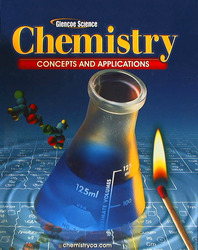
Chemistry: Concepts and ApplicationsChapter 19:In the NewsThe Life of an Organic Chemistry GiantNovember 2004Francis Crick died this year, which may not seem like a big deal to you if you don't recognize his name. Of course, you probably recognize some names in science: people like Madame Curie or Charles Darwin or Albert Einstein. Francis Crick is as important in his own field as these people were in theirs. He was to organic chemistry and biology what Curie was to physics: a giant. What makes Francis Crick such a big deal? Three letters: DNA. Dioxyribonucleic Acid. (Say it three times, fast.) Dioxyribonucleic Acid, or DNA, is the chemical code by which living things do their living thing! Take a look at your hands. Every cell in your body, from the ones at the ends of your fingertips to the retinal cells that just flashed in response when you looked at your fingertips, contains DNA. Your DNA is like a long strip of paper on which is written instructions on how to make you. These instructions also explain how to keep you running--metabolizing energy, growing new cells, the works. DNA isn't paper, though: it's a molecule, composed of a long series of chemicals. Crick knew that the DNA molecule was important in carrying genetic information, thanks to the work of researchers who had gone before him. What he and Cambridge research fellow James Watson didn't know was the actual shape of the molecule. Was it shaped like a beach ball or like a donut? Long and loopy or short and stubby? If someone could figure it out, then understanding how the molecule worked might be possible. Hot on the Trail of the Double Helix Other people were hot on the case too, most particularly a woman named Rosalind Franklin at King's college in London (who probably would have gotten a Nobel Prize for her work had she lived long enough). As so often happens in science, two or more labs are closing in on the same important information, and it becomes a race to see who gets there first. The prize for the winner is scientific immortality. Franklin was already onto the notion that DNA might be shaped like a 'helix,' which is a spiral shape of the kind you see when you look at a spiral staircase. Watson and Crick, though, share the fame for coming up with the idea that the molecule might be two chemical staircases, one going up and one going down, wrapped together. This complicated shape, known as the 'double helix,' is in fact the form of DNA. History, as they say, was made. History Was Made People *also* say that this moment, when Watson and Crick 'cracked' the DNA molecule, was the beginning of modern genetic science. After that fundamental insight, Crick set to work figuring out how only four chemicals found in DNA come together to form the amino acids, which form the proteins, which form . . . well, you. For one scientist, Crick discovered an awful lot. In a sense, he created the world we live in now--where farmers genetically modify their tomatoes so they grow bigger and firmer; where police who catch ca criminal because he left behind a single strand of hair from which his DNA was recognized; where doctors are closing in on being able to cure some inherited diseases before they start, by changing the sick person's DNA. It's a completely different world after Crick. As Stanford University scientist Paul Berg, who won the Nobel Prize in chemistry in 1980, put it, “It's almost too difficult to pay him high enough tribute for what he contributed.” Now, *that's* high praise! Activity: Ask a librarian at your local library to help you find out about Francis Crick, James Watson, and Rosalind Franklin. Which one of these scientists did the most important work in understanding DNA? Why do you think so many people have heard of Watson and Crick but not Franklin? Write a one-page report on what you discovered. The Nobel Museum: TIME 100: PBS Science Odyssey: Francis Crick |  |















